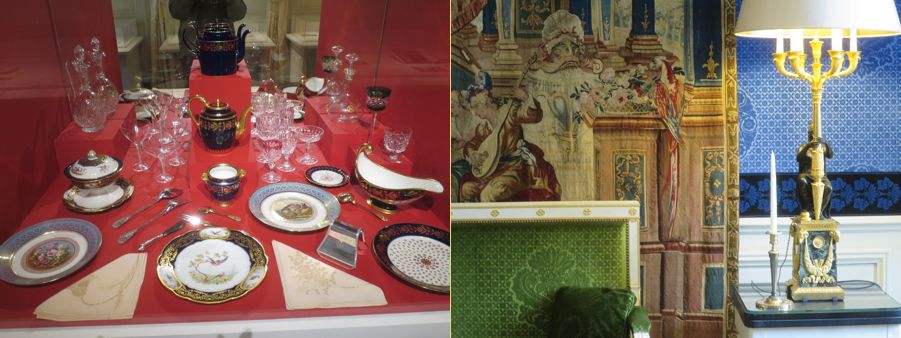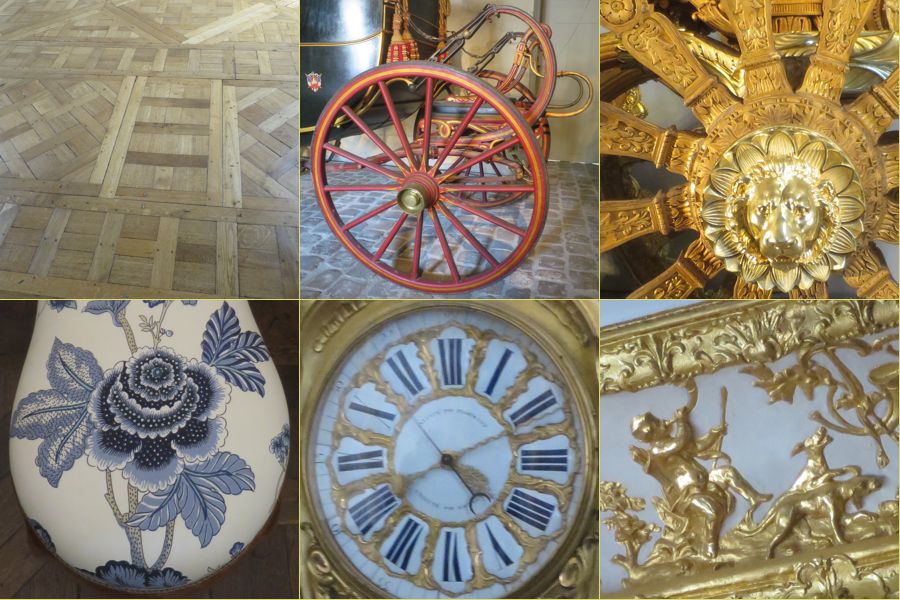| itinerary < Chateau Versailles Royalty > | Versailles 18 June 2016 |
Materials & WorkmanshipThinking the Versailles Experience over, I find two things stand out for me: the materials and workmanship, and the people. Considering this was the home for three successive kings, there's not much here about them. Judging by their history, this place is more vivid than they were. Since I like the first topic, let's start there.
|
 (All those people are a small part of the line waiting to enter.) |
 |
For the better part of four centuries, the absolute best of France has been lavished on this place. From the golden gates (still golden after all these years, despite being torn down in 1798 by the revolutionaries) these gates have been here – at first, to make sure that etiquette was observed and the people, any and all whom might reasonably expect to have an audience with the King, approached in the proper form. Now, they organize the tourists and keep terrorists out. One of the most striking things (to me) about the ornamentation here is its repetition, almost to the point of absurdity. ONE of these ornaments (at left) is impressive, but they are repeated every two meters across the full length of the fence. Imagine having the skill to make something like this ...and being told, "Nice, now make 99 more!" Of course that supports an infrastructure of craftsmen – inevitably the work was done by men – that create a need for apprentices and employ other workers with separate, narrower skill sets – quarrymen, draymen, riggers and movers – and raises the whole level of craftsmanship available to anyone sufficiently well funded to employ them – at this time, a whole over-class of nobility who, by accident of birth, control the wealth. |
|
Imagine with me the work involved in producing these artifacts without power tools and all the manufacturing capabilities we have today. Of course the demand for excellence and reproducibility foster a manufacturing climate that very soon translated itself into the industrial age. An argument can be made that this kind of brilliant excess was a necessary predecessor to our current capabilities. |
 |

|

|

|
 |
Just another clock – almost all the formal rooms had clocks. Accurate clocks were a grand innovation and the latest breaking technology at this time (1690-1790), their development undoubtedly fostered by the Kings' patronage. The clock face with the second hand above took its engineer builder twenty years to perfect and deliver.
And now, for a final, transitional look at a piece of technology that may belong on the next page, about people:
|
|
King Louis XVI's potty (above right). This object is noteworthy because, for the first time in the royal history of France, a king insisted on, and was granted, immunity from some of the indignities endured by kings ("We owe ourselves to our subject," explained L15.) L16 built himself a private bedroom and a personal WC, and instituted other innovations that gave him more privacy. He would awaken in his private bedroom, use this private loo, put on a robe, walk across the state conference room, climb into the formal King's Bed, and then the courtiers would be shown in for the levée. Of course, there was so much more that I have spared you ... and so much I didn't even bother to photograph ... and doubtless so much more in the warehouses here and in Paris. Overwhelming richness. So what about the people who lived amongst all this glory (and clutter)? That would be the topic for the next page. |
 |
updated 16 June 2023 Caspar Time site software and photographs by the Caspar Institute except as noted this site generated with 100% recycled electrons! send website feedback to the CI webster © copyright 2002-2024 Caspar Institute |